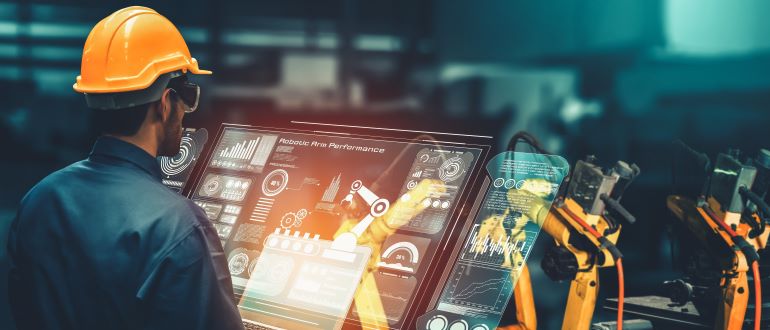
As artificial intelligence (AI) and machine learning (ML) technologies progressively move from pilot projects to the center of industrial operations, it is becoming clear that they are increasingly looking like a practical engine toward operational excellence, resilience and sustainable growth.
Rockwell Automation’s 2025 State of Smart Manufacturing Report found a remarkable 95% of manufacturers have already invested in or plan to invest in AI/ML and generative or causal AI within the next five years. This marks a significant shift in the industry’s mindset, as AI was once considered the domain of early adopters and is now viewed by many manufacturing executives as essential infrastructure.
Rockwell’s report reveals that 56% of manufacturers are currently piloting smart manufacturing initiatives. An additional 20% have moved beyond experimentation and survey respondents claim to be using AI technologies at scale, while another 20% are planning future investments. This widespread adoption is driven by mounting pressures—economic uncertainty, inflation, and persistent supply chain disruptions—that demand new approaches and greater agility.
Rockwell’s report is based on a survey conducted among 1,560 hardware, software, and services decision-makers working in manufacturing-type industries.
“These trends point to strong indications that manufacturers believe AI is an opportunity to beat the competition and are putting money and resources into it. Time will tell if they are picking the right areas of investment to have the desired impact,” said Andrew Stump, Rockwell Automation director of technical enablement. “Smart manufacturing adoption at scale has doubled in just two years. Short-term adoption more than doubled since 2023,” he added.
Quality Control: AI’s Immediate Payoff
The most prominent use case for AI in manufacturing is quality control. Half of all surveyed manufacturers plan to deploy AI/ML to support quality control within the next 12 months. This focus is no surprise: In an industry where precision and consistency are paramount, AI-powered quality systems can detect defects more quickly and accurately than traditional methods, thereby reducing waste and enhancing customer satisfaction.
But the impact goes beyond the factory floor. Quality assurance is also now closely tied to broader sustainability objectives. The survey found that 43% of respondents identified product quality and safety as the most essential factors in their sustainability programs. Meanwhile, 55% said that improving efficiency is a key driver for sustainability initiatives—a 14% increase over the previous year. By leveraging AI to optimize quality and efficiency, manufacturers are attempting to not only cut costs but also advance their environmental and social objectives.
AI Augments, Doesn’t Replace Workers
Contrary to the often-cited fear that AI will eliminate jobs, the data indicates otherwise. Manufacturers are using AI to augment human capabilities, not replace them. Among organizations addressing labor shortages and skills gaps, 41% are introducing AI/ML technologies, and 41% are increasing their use of automation. Rather than cutting headcount, these companies are repurposing workers to new roles or hiring additional staff as they scale their AI initiatives.
The skills gap remains a significant hurdle, with a lack of skilled workforce cited as a top obstacle to outpacing the competition. However, manufacturers are responding by prioritizing analytical thinking and communication skills—83% of respondents named these as the most important qualities when recruiting the next generation of workers. Workforce development and continuous learning must be integral to any AI strategy.
“The speed of change may be catching up with workforces, impacting the necessary adoptions. Since 2023, resistance to change rose to become the most commonly identified leadership obstacle (30%), surpassing previous frontrunners like assessing business needs and technology/talent fit,” says Stump.
The survey found that AI’s most significant promise in manufacturing lies in its ability to drive efficiency and resilience. As inflation and economic headwinds persist, manufacturers are under pressure to do more with less. AI-powered systems can optimize production schedules, predict equipment failures before they happen and streamline supply chains—all of which contribute to higher margins and reduced downtime.
The survey also highlights that 81% of manufacturers believe current macro-obstacles, such as tariffs and uncertainty, are accelerating their digital transformation efforts. For manufacturers, those who can quickly and effectively deploy AI hope to be better positioned to weather economic storms and seize new market opportunities.
While cybersecurity remains an important consideration—particularly as manufacturers integrate IT and OT systems—it is no longer the primary concern for most manufacturing executives. The focus has shifted toward leveraging AI to deliver measurable business value, enhance operational resilience and support long-term sustainability.
Yet, that’s where the data laggards are likely to find their most significant setbacks. “The single biggest challenge (in AI success) is turning the quick proof of concept with undeniable wow factor, of which there are plenty, into a safe, dependable, usable, useful, and cost-effective solution at scale,” said Paul Miller, vice president and principal analyst at Forrester Research.
While most manufacturers recognize that AI can be incredibly valuable, Miller said, most are rushing to make sure they’re not left too far behind their peers. “But the few that are seeing the first evidence of sustainable value didn’t start in 2025. They didn’t even start in November 2022, when ChatGPT exploded onto the scene. They started years, possibly even decades, ago, with the slow, tedious, thankless work of gathering, cleaning, structuring and explaining their data. They built ontologies, they established rules for data retention, and rules for data access, and rules for data sharing,” he said.
Soon, Miller added, it’s the manufacturers who got AI wrong that will “probably be the ones to show the most visible [detrimental] effects in the short term. The ones that didn’t do the groundwork and rushed to stick AI in front of poorly modeled processes generating poorly understood data,” he said.

